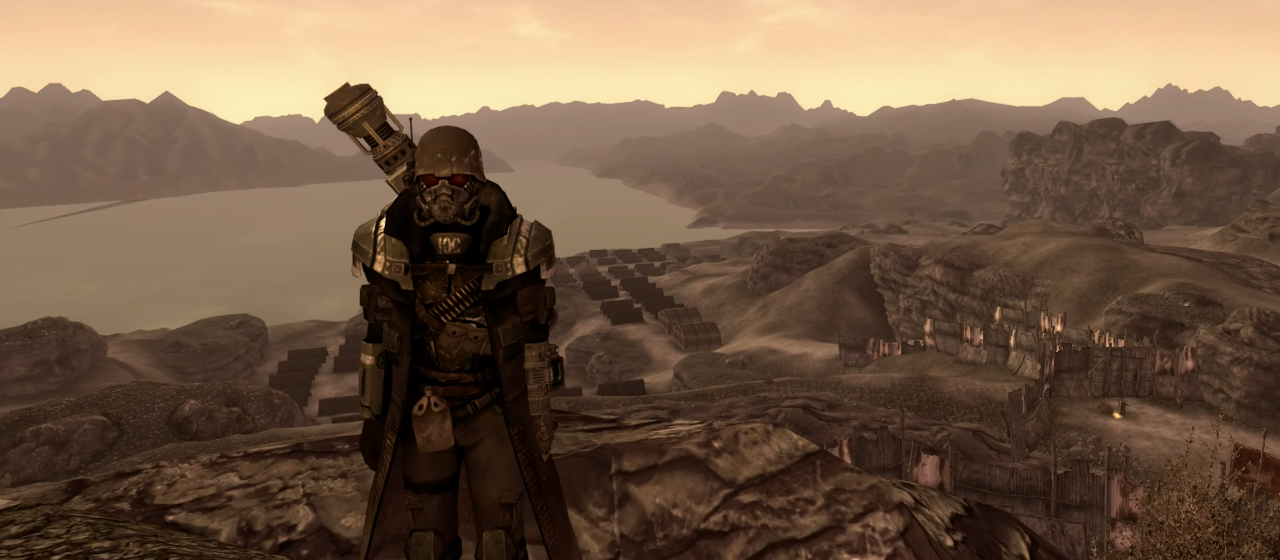
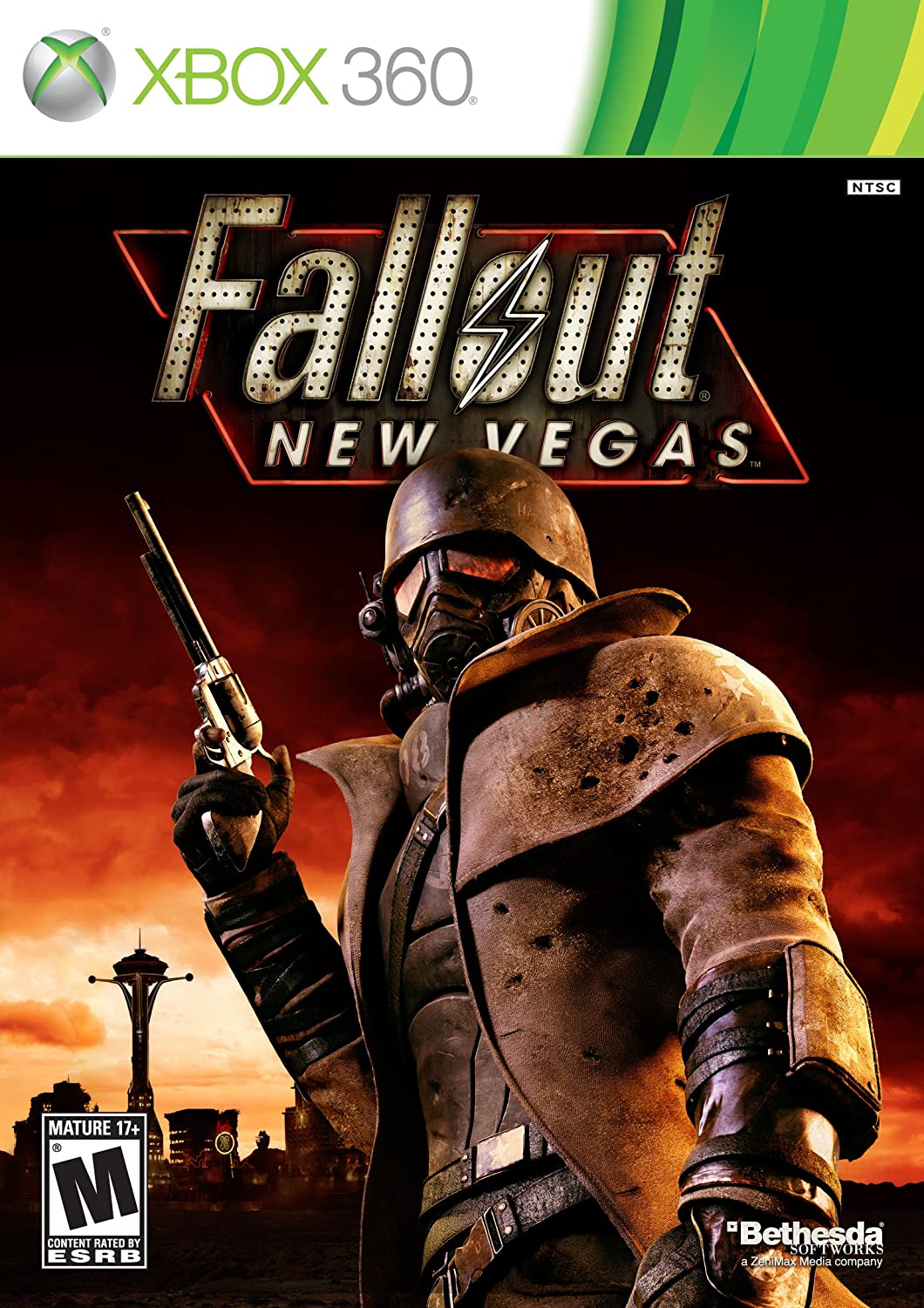
“The only difference between savage and sophisticated is the proper seasoning.”
Made by Obsidian using the game engine from Bethesda’s Fallout 3, with several contributors on board who were veterans of Black Isle Studios (developer of Fallout and Fallout 2), Fallout: New Vegas could be mistaken for a massive expansion of the earlier title—and who could gripe about that? Most of the gameplay elements remain intact, so the unique appeal of New Vegas lies in its minor tweaks to the formula. It sets itself apart from its predecessor by presenting a more open-ended experience in a livelier setting, where your character is a blank slate and your choices are not a binary and your decisions actually affect the outcome. However, it has most of the drawbacks of Fallout 3 and a introduces a few of its own flaws, none of which are egregious enough to seriously mar what amounts to a very fine game.
New Vegas takes place in, well, New Vegas, built atop the remnants of Las Vegas, and the Mojave Desert surrounding it. You are a courier, tasked with transporting a mysterious package across the Mojave when you are ambushed, shot in the head, and left for dead. The story involves tracking down the man who shot you, then deciding between the various factions which are edging ever closer to a battle for control of the Hoover Dam as they each vie for control of the territory.
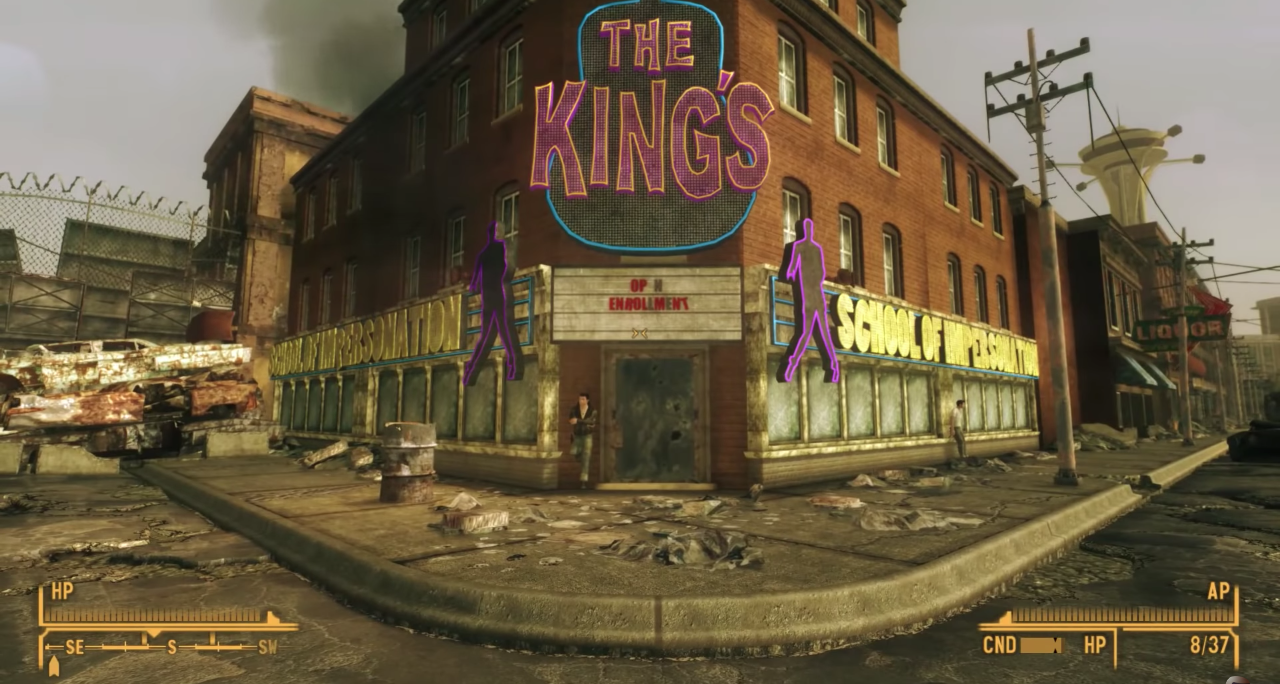
There are three main factions. The New California Republic (who last appeared in Fallout 2) is a modern, militant group that has control of most of the territory, though their forces are spread thin. Caesar’s Legion is a Roman-style government, their forces decked out with armor and swords, that relies on conquest rather than diplomacy. The third is Mr. House, a mysterious businessman who presides over New Vegas with an army of security robots who patrol the city, but is hidden away somewhere, communicating via a monochrome computer screen bearing an image of his face. There are a number of minor factions, including the explosives-loving Boomers, escaped convicts known as the Powder Gangers, a drug-dealing raider band known as the Khans (also seen in Fallout 2), and the Brotherhood of Steel, a heavily-armored vestige of the Army whose aim is to lock down the spread of technology. You can side with any of the first three, and through your actions potentially secure the aid of the others, or use a fallback option of going solo by working with a rogue robot in Mr. House’s casino.
Trading the Capital Wasteland (Washington D.C.) from Fallout 3 for the desert of the American West gives the affair a different sheen. Using many elements planned for Black Isle Studios’ “Van Buren” (their own cancelled Fallout 3), the writers at Obsidian knock it out of the park with the story elements, setting, and visual style. You can explore an abandoned rocket factory, face off against gangsters in pinstripe suits wielding straight razors, raise a B-29 bomber from the bottom of a lake, deal with the cannibalistic White Glove Society, have a conversation with your own detached brain, and assassinate (or prevent the assassination of, depending on who you side with) the President of the NCR.
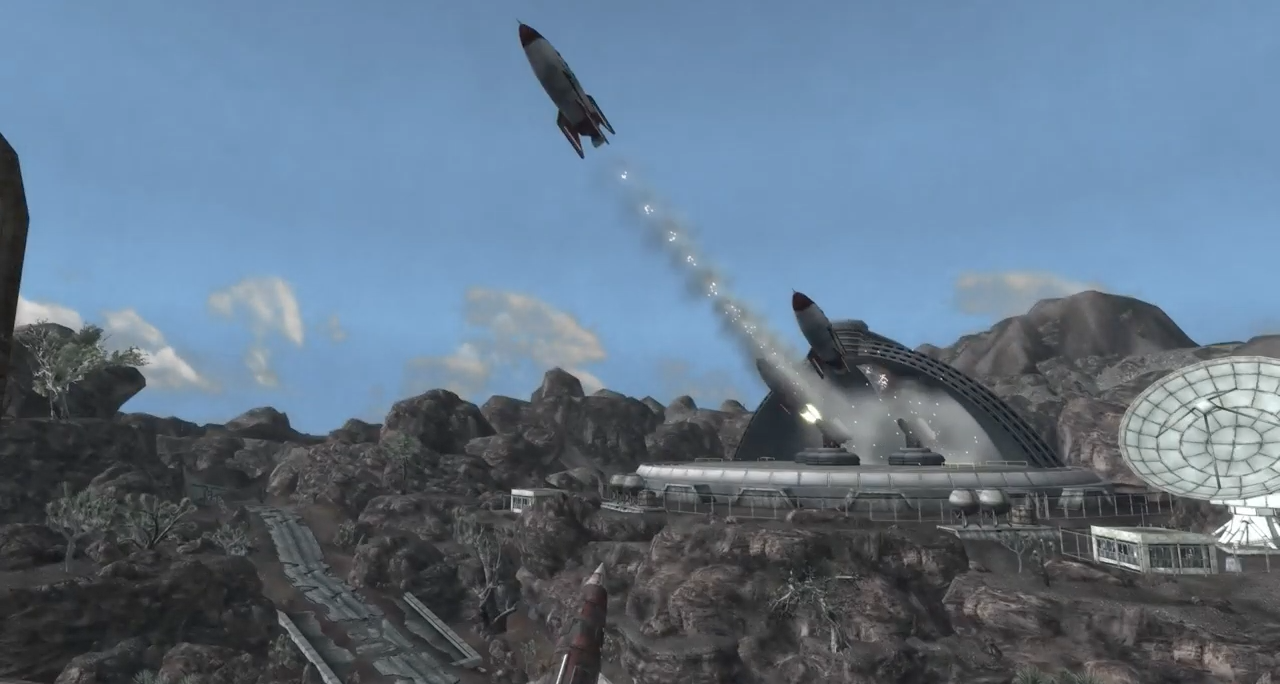
The story is much more open-ended than that of Fallout 3. None of the factions are clear-cut “good” or “bad,” rather each side seems reasonably worth supporting. There are substantially more minor quests to be found in New Vegas (though obviously not all of them are quite as high in quality as the measly yet exquisite fifteen found in Fallout 3).
Obsidian introduced a number of elements that give the gameplay additional wrinkles: the use of iron sights was added to the combat, which makes it easier to survive without using the V.A.T.S. system (which allows the player to pause time and choose where to shoot an enemy);1 you can collect herbs to create medicine and craft different varieties of ammunition; and your reputation with each faction is tracked separately, leading some of them to turn hostile on sight. They also added a “hardcore mode” which requires the player to eat, drink, and sleep, counts ammunition against your weight capacity, and makes healing wounded limbs much more challenging.
Unfortunately, there are a few major elements that seriously hampered my enjoyment of New Vegas. For starters, the map is much larger than in Fallout 3, but unnecessarily so. There is so much empty desert space on the map, and the player is often forced to traverse it on foot, which requires some quests to take 10-15 minutes longer than they should because things are just so far apart. This doesn’t cause too much suffering, but the game also features many “invisible walls” that force the player to search aimlessly for a path that gets them to their destination. A suitable analogy would be that you drove to an address by following your GPS only to realize that you need to be on the other side of a river and the closest bridge is thirty miles away. Once you discover a location you can fast travel to it, but that makes starting a new game a real chore.
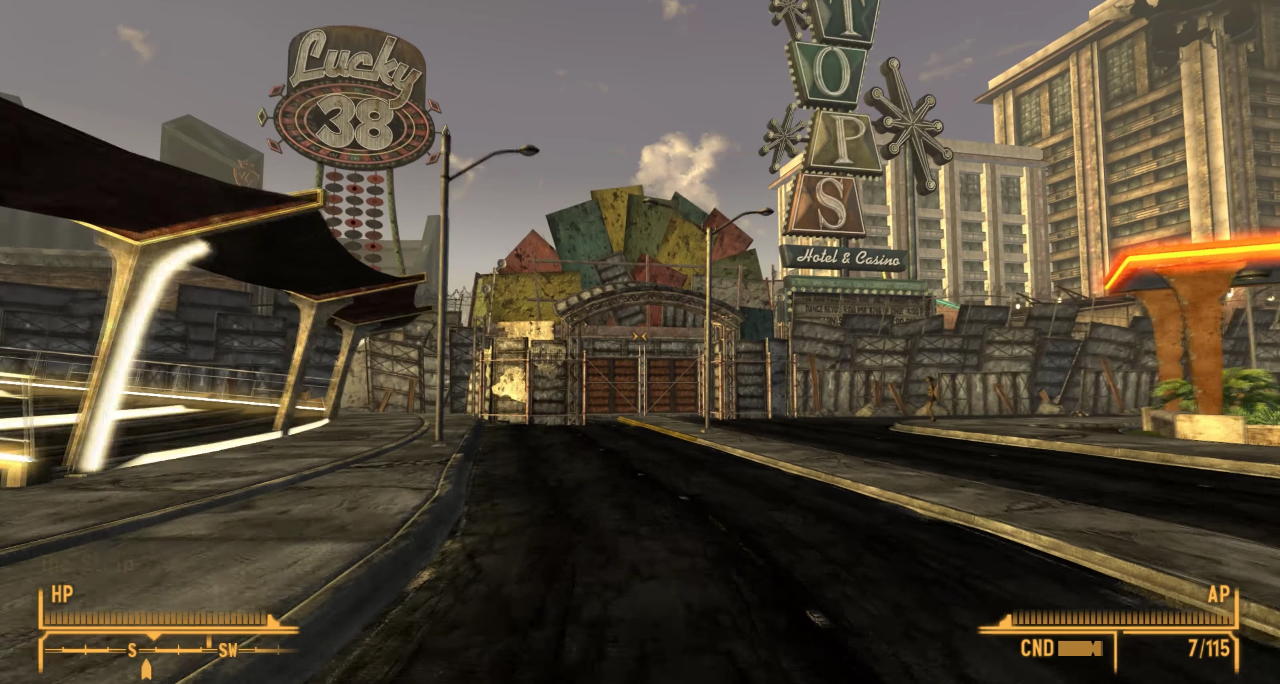
The role-playing aspect is strong in New Vegas, requiring careful consideration when doing side quests and speaking with other characters (whereas in Fallout 3 the storyline was mostly linear with side quests unrelated to the main quest). The settings are different enough—even though they’re only separated by four in-game years—that the genre is almost distinct as well. Fallout 3 is a post-apocalyptic game, populated by listless, dead-eyed characters unsure if they even wish to survive. New Vegas, on the other hand, is post-post-apocalyptic, the civilization rebuilding stage, full of vibrant characters who are happy to be alive and forming small communities.
Because of this difference, the partially recovered environment of New Vegas cannot (and does not attempt to) sustain the “lone wanderer in a desolate wasteland” vibe of Fallout 3. There are fewer mysteries in the semi-populated society of New Vegas than there were on the hinterland peripheries of the earlier title, and the plentiful side missions prove less distinct and memorable than the fewer high quality missions of the previous game. However, this bevy of peripheral material is in service of a better role-playing experience. And that’s simply a trade off. Those looking for stronger RPG elements necessarily sacrifice some narrative heft. Don’t get me wrong, the various storylines here are good, but only when considering the scope of its role-playing. It’s not good like Bioshock is good, but then neither is that games as expansive as New Vegas. It was cool to have to make choices that legitimately cut off future options, but the “Mr. House” storyline was the only one that I really found myself following earnestly. More compelling are the various philosophies and worldviews that can be teased out of the tens of thousands of lines of dialogue provide tough gristle to chew on.
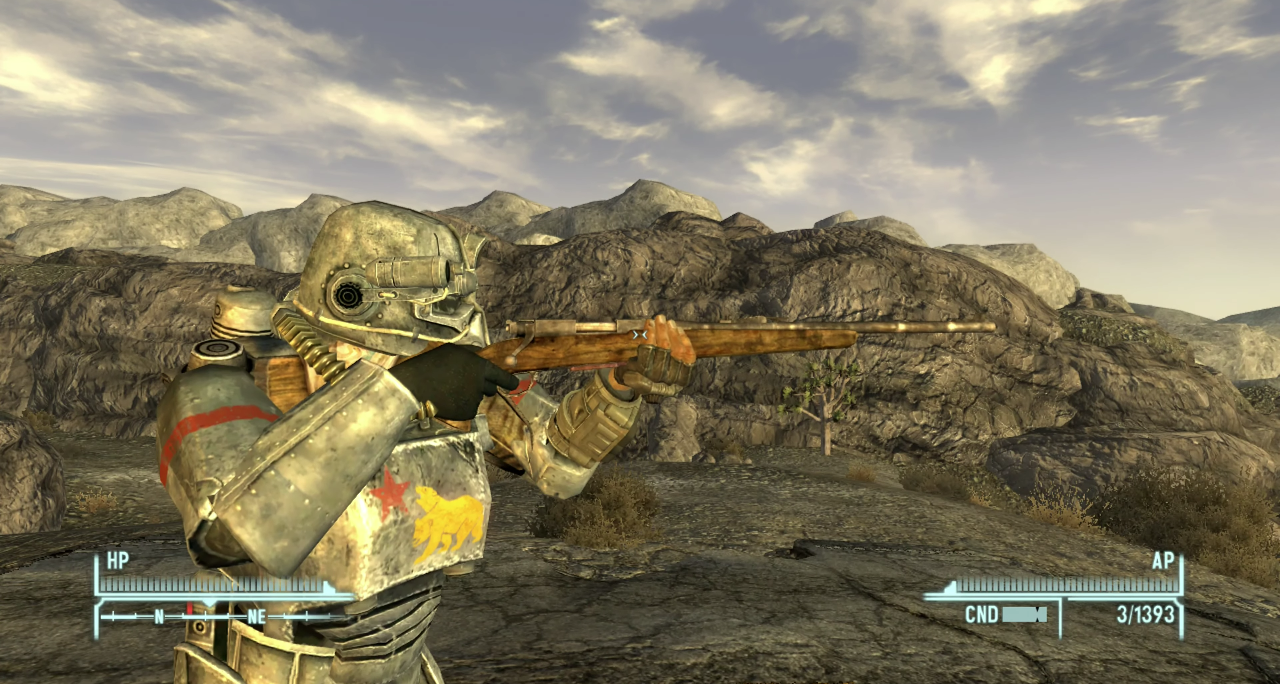
(Upon release, the game was prone to crash, and had a lot of game-breaking glitches, like players getting stuck in a random bit of terrain. Since I didn’t get a chance to play this time-consuming game until years later, with all of those bugs fixed, I can’t really complain about them. I experienced a few, but nothing that I was overly annoyed with.)
Comparing the two games feels less like comparing apples and oranges than comparing two varieties of apple. Mostly the same formula, similarly satisfying, with only a matter of subjective taste separating the two. Both are great action RPGs. Most of the improvements that New Vegas made were logical revisions to make after the success of its predecessor. And seen as a mammoth add-on pack, it’s an excellent value, especially now, when you can get all of it for like 10% of what it cost new. A worthy addition to the series.
1. The combat system is still not very fun though. Serviceable, but not great. Without V.A.T.S. it can be pretty clunky, and V.A.T.S. is basically a way for the developers to cheaply skip over developing a solid combat system. Watching the slow motion death of an enemy is only cool for about the first two hours of playing, then it becomes an annoying waste of time. And without a dedicated melee button, I often found myself close to an enemy, logging into my Pip-Boy to switch to a melee weapon or a shotgun. Smoother combat would definitely make this game way more fun to play.